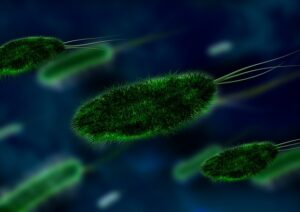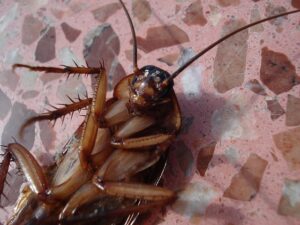
Indoor air pollution is a serious concern in many modern homes. Recent research shows that the air within our homes is more polluted than outdoor air. Another concern is that most people spend more time indoors especially during the pandemic. Therefore, for the majority of the population, the risk of developing respiratory health problems from exposure to air impurities is high.
Sources of Indoor Air Pollution
Indoor air pollution can come from many sources. Insufficient indoor air circulation increases the level of air impurities in the home. Sources of indoor pollutants can be classified into biological and chemical sources.
Biological Pollutants
Biological air pollutants are living organisms or are produced by living things. Some of these biological air contaminants include viruses, bacteria, mold, mildew animal dander, house dust mites, pollen, and insects.
High humidity and temperature encourage the growth of some of these biological air pollutants. Also, stagnant water and moist surfaces encourage the growth of some of these air contaminants. Sources of these pollutants differ.
Viruses
Viruses are transmitted by animals and people. These elements are responsible for several respiratory tract infections including the flu and pneumonia.
Bacteria

Bacteria come from the soil, plants, animals, and people. These organisms are responsible for some respiratory ailments including the common cold and pneumonia.
Pets

Household pets pollute the indoor air by releasing irritants such as hair, saliva, urine, skin, and feces. These elements are known asthma triggers.
Mold
Poor moisture control in homes is responsible for the growth of mold and mildew. Scientific evidence indicates that exposure to mold causes respiratory tract infections including asthma, pneumonia, among others. However, you can fight such issues by buying a good air purifier for mold and mildew.
Pollen

Pollen originates from plants and may find its way into homes through open doors and windows especially during the pollen season. Symptoms of pollen allergy include coughing, sneezing, watery eyes, and shortness of breath. Persons allergic to pollen often suffer from asthma triggered by inhaling the pollutants.
House Dust Mites
Another group of biological air pollutants in the house is dust mites. The bedroom is a common room where mites thrive. Bedding, mattresses, carpets, and pillows provide an ideal environment for the organism to survive. High humidity and temperature levels within the home encourage the growth of these pollutants.
Studies have linked house dust mites with allergic responses such as asthma. Waste material from dust mites usually spread through dusting and vacuuming leading to inhalation and potential allergic response. Reducing humidity within the home, cleaning regularly, or eliminating carpets and vacuuming can help reduce the growth of these biological pollutants.
Cockroaches

Body parts and droppings from cockroaches contribute to significant pollution of indoor air. One can also inhale tiny insect body parts leading to respiratory problems such as asthma. Besides, wastes from the insects such as saliva, feces, and urine can cause respiratory allergic reactions.
To eliminate these potential triggers, get rid of all the roaches and conduct thorough cleaning to remove any remaining allergens.
Chemical Pollutants
Chemical air pollutants also compromise indoor air quality. The World Health Organization identifies the following to be chemical air pollutants: nitrogen dioxide, benzene, carbon monoxide (CO), formaldehyde, polycyclic aromatic hydrocarbons (PAHs), naphthalene, radon, and tetra- and tri-chloroethylene.
Carbon monoxide
Carbon monoxide is a common toxic gas in homes resulting from the incomplete combustion of carbon. The danger of the gas is that it can kill you before knowing it is in your home because it is colorless and odorless.
Common sources of this toxic gas include inefficient chimneys and furnaces, kerosene heaters, gas stoves, automobile exhaust, tobacco smoke, and boilers. Health effects of breathing carbon monoxide include chest pain, impaired vision, impaired brain function, dizziness, headaches, nausea, and death. To eliminate indoor carbon monoxide pollution, ensure that all your heating and cooking equipment is well maintained.
Ozone
The major source of ozone pollution in the home is outdoor ozone. Ozone is created by the exposure of contaminated air to sunlight or ultraviolet light producers. Also, home devices meant to remove harmful pollutants through ion generation can produce ozone.
Inhalation of ozone can cause respiratory illnesses including throat irritation, shortness of breath, coughing, chest pain, lung damage, and asthma. Avoiding equipment known to be ozone generators can minimize indoor air pollution with ozone.
VOCs

Volatile organic compounds (VOCs) refer to organic chemicals that vaporize at room temperature. Today, many household products are made using organic chemicals. These include cleaning products, disinfectants, cosmetic products, wax, varnishes, and paint.
VOCs known to be common air pollutants include trichloroethylene, xylenes, styrene, and toluene. These pollutants cause cancer, birth defects, endocrine disruption, and neurological problems. To prevent exposure to the VOCs, one can minimize the use of household products made from these chemicals, provide good ventilation and use all household products according to directions.
You can also choose one of the best air purifiers for chemicals and paint fumes to be your partner in fighting VOCs.
Tobacco smoke

Tobacco smoke is emitted from the combustion of tobacco products. Smoke coming from the combustion of a cigar, or cigarette and the smoke exhaled by a smoker are common air pollutants in the home. Exposure to tobacco smoke can cause asthma, low lung function, lung cancer, miscarriage, and low birth weight. Avoiding smoking and increasing indoor ventilation prevents the adverse effects of inhaling tobacco smoke.
Pesticides

The use of pesticides to control pests is one of the leading causes of indoor air pollution. Inhalation of pesticides is causes health problems including irritation of eyes, throat, and nose, central nervous system dysfunction, and kidney issues. To avoid contamination of the home with pesticides, homeowners should consider eliminating the habitat for pests and eliminating their food sources.
Lead
Lead is another toxic element that accumulates in the modern home thus contaminating the indoor air. It is common in products such as batteries, water pipes, cables, and shields. Exposure to lead in the home through ingestion or inhalation can cause severe health complications.
Children are the most vulnerable group to lead poisoning. They can be exposed through inhalation and ingestion of lead in dirt and paint chips. Inspection of buildings is necessary to prevent exposure to lead. If lead contamination is present, hazard elimination and renovation are necessary to repair damaged water pipes and chipping paint.
Final Thoughts
Indoor air pollution causes adverse health effects. Air contamination in the home comes from both biological and chemical air pollutants. You can eliminate these air pollutants by avoiding the use of harmful household products, maintaining hygiene in the home, reducing the humidity in the home, and proper ventilation.
Also,investing in a good air purifier is a good step toward ensuring that your home or office remains habitable.